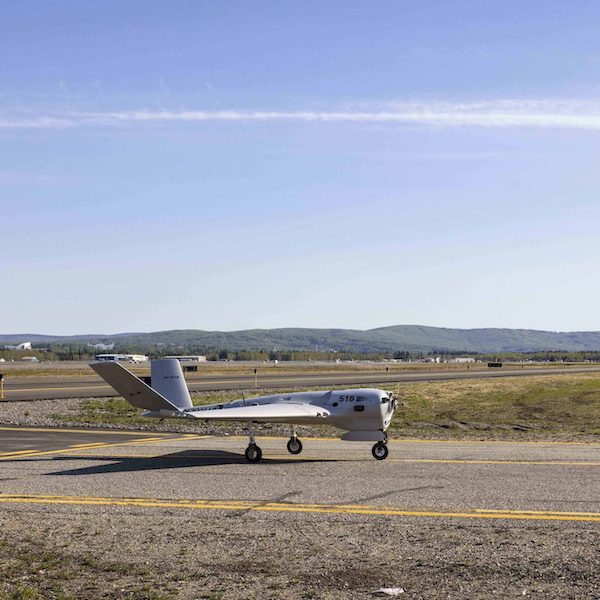🇺🇸 FAA waiver for UAF drone programme

By Yereth Rosen, Alaska Beacon
THE UNIVERSITY OF Alaska Fairbanks’ nationally recognised drone research programme reached what its staff said is a milestone, winning approval from federal aviation authorities to oversee other organisations’ unmanned aircraft flights. This makes it easier for customers to conduct tests with the university’s support.
The Federal Aviation Administration last week granted a special waiver that gives UAF’s Alaska Center for Unmanned Aircraft Systems Integration (ACUASI) responsibility for assessing airworthiness of customers’ aircraft and procedures, the university said in a statement. With the ACUASI in charge of that duty, companies and organizations testing their drones in designated airspace areas are able to do so in a more streamlined manner, the university said in its statement. Without the waiver, applicants had to apply individually to the FAA for airworthiness certificates and other permissions.
The waiver applies to drones under 136kg. Under its terms, the ACUASI will control all the operations covered, the university said in its statement.
“The FAA is allowing the test site to test and evaluate larger drones under real-world conditions,” Cathy Cahill, the ACUASI director, said in the statement. “This will allow us to support the development of a strong drone economy in Alaska and across the nation.”
The ACUASI has multiple established airspace ranges for testing — seven in Alaska and several others in the Lower 48, said Nick Atkins, the centre’s deputy director. Between all those sites, there have been about 1,200 flights so far this year, Mr Atkins said.
The centre was established in 2012 as a unit of UAF’s Geophysical Institute. It now leads the University of Alaska system’s unmanned aircraft programs.
Through it, UAF flies its own drones for various scientific purposes.
Last summer, for example, a 136kg UAF-owned drone called the SeaHunter was used to monitor North Atlantic right whales in Canadian waters, collecting information used to prevent ship collisions that are a major hazard to the highly endangered population.
Also last year, the programme achieved a milestone by flying a drone weighing 127kg with a wingspan of nearly 4m from Fairbanks International Airport. It was the first time a large drone had been flown from an international airport in Alaska.
Alaska Beacon is part of States Newsroom, a network of news bureaus supported by grants and a coalition of donors as a 501c(3) public charity. Alaska Beacon maintains editorial independence. Contact Editor Andrew Kitchenman for questions: [email protected]. Follow Alaska Beacon on Facebook and Twitter.
This article has been fact-checked by Arctic Business Journal and Polar Research and Policy Initiative, with the support of the EMIF managed by the Calouste Gulbenkian Foundation.
Disclaimer: The sole responsibility for any content supported by the European Media and Information Fund lies with the author(s) and it may not necessarily reflect the positions of the EMIF and the Fund Partners, the Calouste Gulbenkian Foundation and the European University Institute.
